- Mixing Media
- Posts
- My Top Manga 2024
My Top Manga 2024
AKA the Bulk of My Media Consumption
Coming up with my top manga list is always difficult. It’s by far the medium I consume the most of in any given year, although this past year podcasts started to come close. As of the close of 2024, I’ve completed 85 different manga series through the years, and I’m currently following 56 ongoing series. This past year, I read 240 volumes of manga across I don’t know how many chapters. Narrowing down my favorites can feel like a Herculean task, made more challenging by how hard it can be to actively track what I’m reading.
But I did manage to narrow things down and arrive at a list I’m happy with. I was pleasantly surprised to see that there was very little overlap with last year’s winners. Even with an expanded list, there’s only one repeat from 2023. That’s not to say that last year’s winners weren’t still excellent this year. But it’s much easier to be captivated by a series when I can binge it. For example: Going into 2023, I had never read Vinland Saga, which would go on to be my top manga of the year. That year, I read all 27 existing books in the series, which totaled 207 chapters at the time. In 2024, Vinland Saga released 9 chapters. While I still actively enjoyed these chapters, it was more difficult to be blown away with less narrative to cling to. This was a huge factor for my 2023 list: of the series chosen, all five were series that I read for the first time in 2023.
That’s not the case in 2024. Partially this is because I binged fewer series this past year. While I started 18 new series, most of those were new series that I followed along with week by week. There were only about 5 series that had backlogs for me to binge, and of those only one truly stood out to me, as you’ll see later. Instead, 2024 was a year where my serial stories took front stage. Serial storytelling is a difficult tightrope to walk. A weekly manga series releases about 15-20 pages a week, monthly or quarterly series anywhere between 30-60 pages. This often leads to story flow being disrupted, with important narrative moments being cut midway. And as a reader, I’m often imperfect. I struggle to remember what goes on week to week, even more so with series that update less frequently. But manga authors who truly master the format know how to deal with these problems. They know when to end a chapter, they know how best to pick things up the next issue, all the while crafting truly excellent overarching narratives. And their storytelling prowess doesn’t even begin to touch on the artistic skill involved that it takes to draw 15-20 high quality pages of art in a week.
As a reader, it’s fun to have a constant stream of high quality content, but it’s also important to take a moment to recognize the toxic nature of the industry. Getting into a manga magazine has been compared to winning the lottery for authors. And even once the author is in a magazine, about 50% of series are axed by the end of their second volume. This is a brutal system that forces mangaka to sacrifice their health and sanity for the sake of their art. All time great authors like Yoshihiro Togashi of HunterxHunter, Eiichiro Oda of One Piece, and George Morikawa of Hajime no Ippo have talked a lot about how being a mangaka has taken massive tolls on their physical health, and the past few years multiple famed mangaka have experienced surprisingly early deaths due to heart failure. Health problems lead to breaks and hiatuses, which are accompanied by fan backlash, but fan backlash is often a constant regardless of breaks. Jujutsu Kaisen author Gege Akutami was candid about receiving death threats throughout the past two years following the deaths of fan favorite characters leading up to the series conclusion this September, which was followed by even more death threats from individuals unsatisfied with the ending.
As often comes up in my media ramblings, I am fascinated by the process of art. The talent it takes for individuals to create paired with the hard work it takes building the skills to see the art through. Yet it’s so easy to be blind to this. How often do we choose to skip tv and movie credits, book acknowledgements, and all the other forms of recognition given to those who get us our art. People often talk about how easy artists have things, how these individuals get to do what they love and make massive salaries doing so. Never mind that the massive salaries tend to not actually be true. Watching coverage of the LA fires, I’ve seen a sort of perverse glee from some at seeing actors homes burn, drawing parallels to Luigi Mangione’s killing of Brian Thompson. Never mind the fact that actors and artists (for the most part) are not engaged in the exploitation of the working class. . Following the strikes of 2023, I had hoped to see greater class solidarity with artists, and I am hopeful for this still to come, yet I must recognize that it hasn’t happened yet.
Bringing things back to manga, my point in bringing any of this up is in recognizing the dichotomy that comes with loving and appreciating this medium, including the rate at which I receive the art, while simultaneously grappling with its toxicity. I don’t know what the answer to the toxicity is. Many believe that the extreme pressures of the industry are what makes the quality so good, although there is ample evidence to debate that claim. In the meantime, I will advocate for better working conditions for artists, promote their works, and support them where I can. On that note: my top manga of 2024.
Honorable Mentions

Credit Viz Media
Zom 100: Bucket List of the Dead. Story by Haro Aso, Art by Kotaro Takata. 73 chapters across 17 volumes. 2024 saw the release of 2 volumes and 11 chapters. Status: Ongoing. 4⭐

Credit Viz Media
Zom 100: Bucket List of the Dead follows Tendou Akira’s journey through a zombie apocalypse. Before the world fell apart, Akira worked as a salaryman, having given up his dreams to make money and be comfortable. Living through the grind of corporate Japan proves to be unbearable to him, and every day he feels his soul die a little more. He was becoming a zombie. Things change when an actual zombie apocalypse begins. No longer content to just drift through life, Akira creates a Bucket List of 100 things he wishes to do before being bitten and killed. His infectious energy and lust for life draw people to him, and eventually he gathers a team of survivors. As the series goes on, Akira and the crew learn more about what caused the zombies and what might be done to save the world, all while ticking items off the Bucket List.
I know I said earlier that I didn’t binge that many series this year. Zom 100 was one of them. An unabashedly anticapitalist work, I was quickly drawn in. Zom 100 was Haro Aso’s response to the toxic nature of the manga industry following the success of his earlier work, Alice in Borderland. He was left feeling burnt out and done with the industry, so he took a year off work, living off the grid in a camper, before returning refreshed to create Zom 100. With some caveats: he was no longer an illustrator, recognizing that trying to write and draw at the pace the manga industry demands was far too unhealthy an ask. Zom 100 challenges readers to live in the moment and to consider what essential aspects of our lives might we be sacrificing for no good reason. The story is goofy and absurd, and the zombies are more of a convenient plot device for our heroes to ask questions rather than a true meaningful threat. The plot and art can be uncomfortably objectifying at times, but sadly that’s part and parcel for a lot manga series. The midpoint of the series does also suffer a dip in narrative quality as the author clearly struggled to come up with ideas to keep things going after making his initial point. But regardless of those facts, I found the first 5 volumes of this story to be extremely well done. I enjoyed the bubbly art style and infectious optimism of Akira, and I’ve been enjoying things (to an admittedly lesser extent) through the later volumes as well. I definitely recommend checking out the start of the series and taking its message to heart. We are in this world to be more than just zombies.
Zom 100 can be purchased as individual volumes through bookstores (or maybe found at your local library), and individual chapters can be read through the Viz Media App (which costs only $1.99 a month for access to essentially unlimited manga). The first 5 volumes are only 19 chapters, so an easy read for anyone. If reading manga isn’t for you, the first part of the story has been adapted into an anime and a live-action Netflix film.

Credit Viz Media
My Hero Academia. Art and Story by Kohei Horikoshi. 431 Chapters across 42 volumes. 2024 saw the release of 3 volumes and 20 chapters, covering its “Final War” Arc and “Epilogue” Arc to the completion of the series. Status: Complete (2014-2024). 4⭐
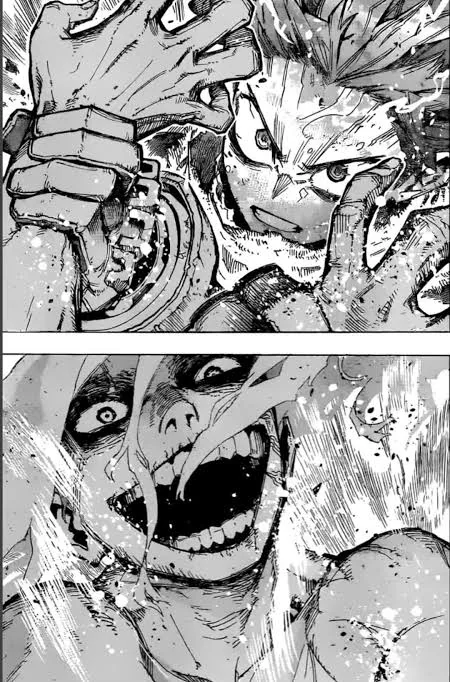
Credit Viz Media
My Hero Academia is set in a parallel world where almost all individuals are born with superpowers, called quirks. Some individuals become professional licensed superheroes, while others become villains. Protagonist Izuku Midoriya, nickname Deku, was amongst the 10-15% of the population born without a quirk. Despite this, he idolized superheroes and following an incident where he exhibited extreme courage, the #1 ranked hero All Might chose Deku to inherit his quirk: One for All. After this, Deku is transferred to U.A. High School to be a member of the best Hero program in Japan. He trains and bonds with his classmates, growing as a person, student, and hero. Meanwhile, the villain All for One, long thought defeated by All Might, is scheming to retake power through the help of his protégé, Tomura Shigaraki. The Final War Arc follows the collapse of society following All for One’s escape from prison, and the war between the Pro Heroes and Villains, culminating in a final battle between Deku and Shigaraki to determine the fate of Japan.
My Hero Academia has always had unfortunate expectations placed upon it. The series is heavily inspired by Western Superhero comics, and sold itself as a blend of eastern and western comic styles. MHA released the same year Naruto ended, and since its start, Shonen Jump Magazine wanted MHA to be a banner series. While popular, My Hero never captured the popularity of the “Big Three” (Naruto, One Piece, Bleach) that came before it, and as the years went on it saw its popularity eclipsed by the wave of edgier, darker manga that began around 2020 including Demon Slayer, Jujutsu Kaisen, Hell’s Paradise, and Chainsaw Man. There are a lot of reasons for this. My Hero has always been a pretty formulaic series, and has never been the best at anything. Its art is fine, its story is fine, its characters are fine, its action is fine. There have also been issues with how its author portrays women (a very common issue in manga) and with how homophobic the author has been when responding to fan ships of top characters. And yet. I’ve always had a soft spot for MHA, in part because of the impossible expectations placed on it. Many of the story beats that people found to be “flaws” I enjoyed. People often found Deku to be too idealistic, they were frustrated with how the author sought to redeem villainous characters such as the vigilante Stain and abusive hero Endeavor, and they hated how the author let characters survive the most impossible situations. I in turn appreciated the take that people can always be redeemed, and the author never made it seem as though people were forgiven without consequences. Plus, the optimism of the story (and the ages of the characters) made it sensible to keep people from being killed often. Not every series has to be gritty and realistic. Media can be hopeful and idealistic, a reflection of what we wish the world to be. While MHA never reached the heights people wanted of it, it was always consistently good, and it truly did stick the finale, bringing things full circle in a way I found immensely satisfying. I think the series will be remembered in the future as an underappreciated gem once there’s some perspective.
My Hero Academia can be purchased as individual volumes or read as chapters on the Shonen Jump app with a subscription for an admittedly more expensive $2.99 a month. I still think the price is worth it given that you get access to over 20,000 chapters of manga from the most famous series in the world. Unlike Zom 100, I don’t have a convenient section to pick out to recommend. But if you check out the first volume (7 chapters), I think it gives a good representation of the tone and art. If its for you, then the series stays consistent and it’s a pretty quick read, all things considered. The anime has been fairly well received if watching sounds better than reading.

Credit Kodansha
Hajime no Ippo. Art and Story by Morikawa “George” Joji. 1480 chapters across 142 volumes. 2024 saw the release of 3 volumes and 35 chapters covering its “Judgement Day”
Arc. Status: Ongoing. 4.5⭐
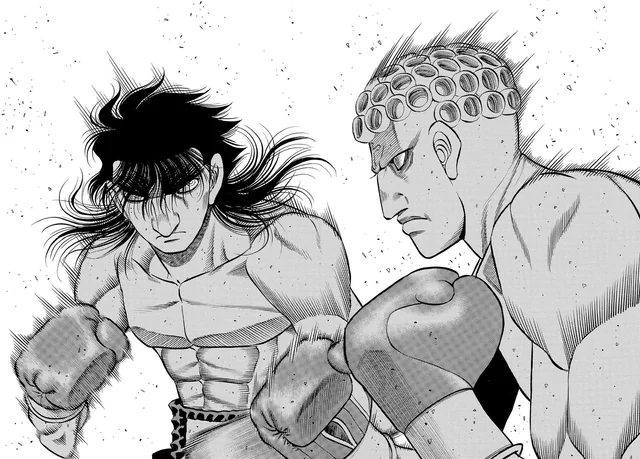
Credit Kodansha
Hajime no Ippo follows the boxing journey of Makunouchi Ippo. Ippo starts as a cowardly yet kindhearted high school student who gets into boxing. Across the past 35 years, the series has followed Ippo, his friends, and his rivals through their journeys beginning as boxing amateurs to becoming some of the best boxers in the world. For the past few years, Ippo has been out of the ring contemplating retirement, we have continued to follow the boxing careers of his comrades. 2024 saw Ippo’s former rival and older brother of the love interest Kumi, Mashiba Ryo, compete for the lightweight boxing world title.
Ippo has taken a back seat to let other players shine. Mashiba Ryo has long been one of the most fascinating characters in Hajime no Ippo. He starts out as an unabashed villain, using dirty tricks and savagery to win matches by any means necessary. Through Kumi, we are gradually shown that there is more to Mashiba beneath the surface. Kumi and Ryo’s parents died when he was a teenager, leaving him to care for his much younger sister. Between the stress of being a provider and his underlying anger issues, Mashiba frequently got into fights and legal trouble before eventually being picked up by a boxing gym. This allowed him to channel his rage and desperation into a career where he could make enough money to keep his family provided for. Ryo is in many ways a mirror of Ippo. Where Ippo is kind and cowardly, Ryo is cold and vicious. He has long objected to the simmering romance between Kumi and Ippo, in part due to Ippo’s cowardice and in part because Ippo beat him in the ring. Through the years, we’ve seen Mashiba curb his worst qualities, and in doing so he’s been accepted by the people around him. Judgment Day is the culmination of all of this. He’s finally buried his demons and now he’s at the top of his career. Ippo and Kumi both play pivotal roles in supporting his training efforts going into the match, helping Mashiba to at least come close to burying the hatchet between himself and Ippo. But his opponent in this match, Marcus Rosario, is in many ways the same type of person that Mashiba used to be, a desperate man who turned to boxing as an outlet for violence. Through the match, Rosario attempts to foul and cheat his way to victory, and in doing so Mashiba is tempted to backslide into the Grim Reaper he once was. Seeing Mashiba struggle through the arc reconciling who he once was to who he has become was incredibly gratifying, leading to emotional beats in tandem to the frenetic action of the boxing match. The art has a rough edge to it that many manga try to shy away from, and George Morikawa is truly a master of showing the kinetic energy of boxing in his art, with some extreme crunchiness when a punch successfully lands. The Judgment Day is just now reaching its conclusion at the start of 2025, but it is definitely one of the best in a truly gargantuan series.
There are sadly no great ways to read Hajime no Ippo, and even if there was, its a tall ask given that the series has been running continuously since 1989. However, because Hajime no Ippo is primarily a boxing story focused on individual matches, it’s not too hard to jump into a specific match and understand what’s going on. A good intro is the Dragon Slayer Arc, which took place between chapters 461 and 504, and anime episodes 111 and 117. Neither take that long and give a good showing of what makes the series great. The first 100ish chapters are available on the kmanga website, but kmanga is a horrible gatcha style site where one must buy points and then use points to unlock specific chapters, and overall its terribly unwieldy. None of the volumes have been released in America either. As such, much as I am loathe to recommend, the only true way to read Ippo in America is through fan translation sites. A more legitimate way to enjoy things is via a pretty stellar anime that can be found on Netflix and Crunchyroll.
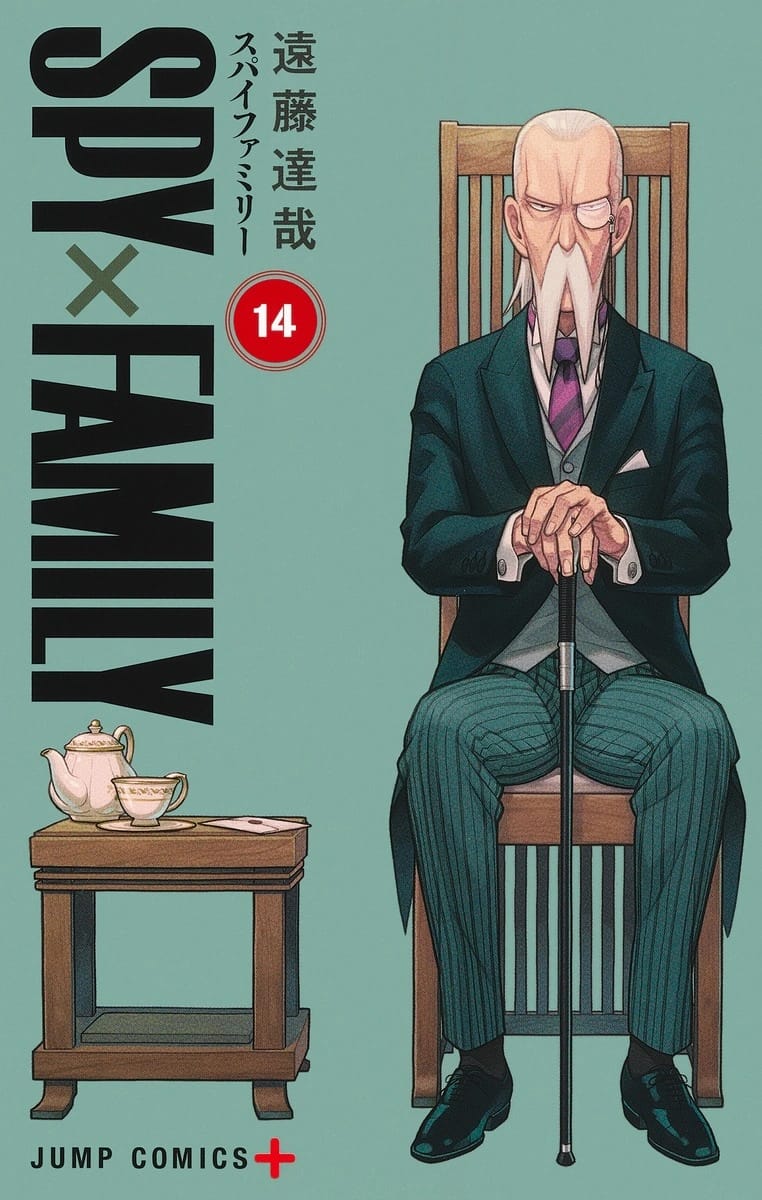
Credit Viz Media
Spy x Family. Story and Art by Tatsuya Endo. 109 Chapters across 14 volumes. 2024 saw the release of 16 chapters and 2 volumes, covering the end of the “End of Term Finals” Arc, the entire “Love and War” Arc, and the start of the “Term Break” Arc. Status: Ongoing. 4.5⭐
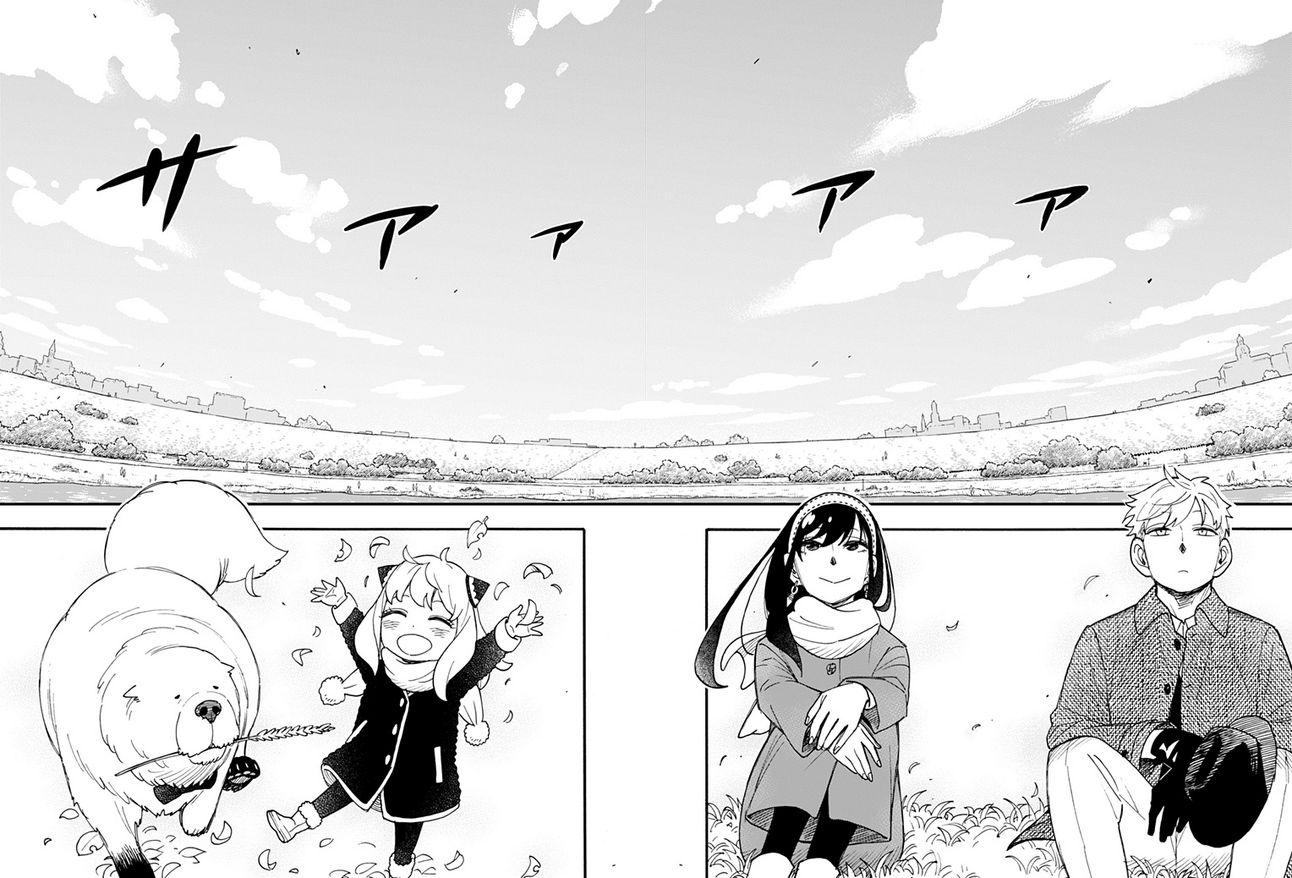
Credit Viz Media
Spy x Family focuses on three main characters. Super spy Twilight is from Westalis. Westalis is in the midst of a Cold War with the nation of Ostania, following a brutal war that both nations are still recovering from. Twilight has been sent to infiltrate the inner circle of hawkish politician Donovan Desmond to ensure the Cold War stays cold. To accomplish this goal, Twilight takes on the identity of Loid Forger, and adopts a young orphan named Anya to infiltrate the boarding school Desmond’s son Damian attends to have the children become friends. To make his fake family complete, Loid also enters into a partnership with a woman named Yor, who joins the Forger family due to personal and government pressures to not stay single. What Loid doesn’t know is that Anya has psychic powers, and Yor is a member of a secret Ostanian assassin network. The series follows the often comedic efforts of each member of the family to keep hidden the secret side of their lives. Anya is the focus point, as the mission hinges on her not being expelled from the rigorous Eden Academy, despite her rambunctiousness and academic underperformance.
The End of Term Finals Arc and Term Break Arc both focus on the Forger family through these challenges, but the real reason why Spy x Family made the list this year is because of the excellent Love and War Arc. The arc follows a flashback into the past of Eden Academy headmaster Henry Henderson living through the Great War. It follows his struggle of being a peacemaker in a time of war, and his romance with secondary character Martha Mariott, who enlists in the army. Spy x Family is an extremely comedic series, but when the series takes a dramatic turn is where it truly shines. Showing the way that war chips away at individuals both on the front and at home, the story did an excellent job of showcasing why it is so important that Loid’s mission not fail. From the brutality of battles, to the way propaganda dehumanizes our enemies, to the way peacemakers are ostracized, Spy x Family is showcasing itself to be a surprisingly effective and impactful peace of antiwar literature, even with its comedic trappings. This is in addition to its absolutely gorgeous art style that features some of the most intense expressiveness in characters that I’ve ever seen.
The Love and War arc is a nice self-contained story arc that is only six chapters long, but frankly it does not truly showcase what the series is about. The best way of seeing if the series is for you is to read the first arc of the series, covering the first six chapters. The manga can be read as individual volumes, or as chapters on the Shonen Jump App. If what you see there captures you, the rest of the series is a joy to read. There has also been a pretty well received anime adaptation that can be found on Crunchyroll or Hulu.
Number 5: Dandadan
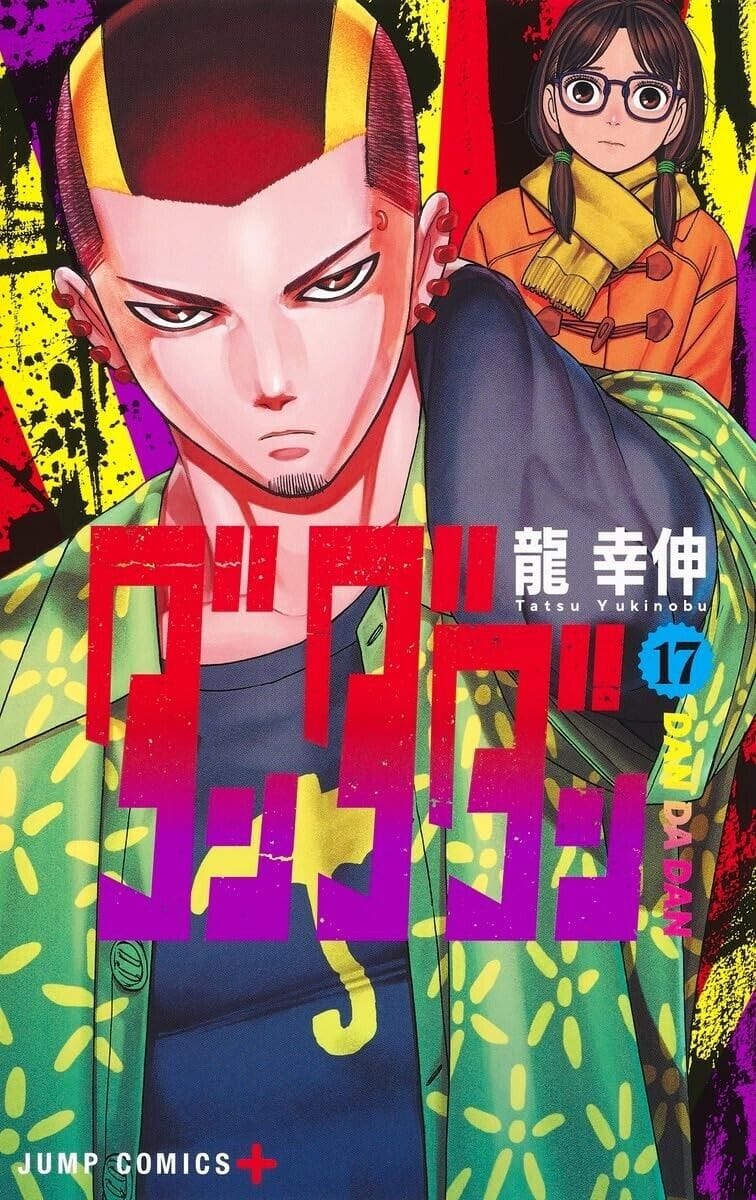
Credit Viz Media
Story and Art by Yukinobu Tatsu. 181 Chapters across 18 volumes. 2024 saw the release of 45 chapters and 5 volumes, covering the end of the “Danmanra” Arc and the start of the “Pygmy Princess” Arc. Status: Ongoing. 5⭐

Credit Viz Media
Dandadan follows joint protagonists Ayase Momo and Takakura Ken (Okarun) as they explore paranormal happenings in their hometown. At the start of the series, Momo believes in occult because of her exorcist grandmother, whereas Okarun believes in extraterrestrials. In an attempt to prove the other wrong, each goes to investigate a paranormal location, only to end up finding that both the occult and extraterrestrial exist. Following this, the two go on a series of adventures exploring the paranormal to discover just what is drawing so much weirdness to their hometown.
The only repeat player from last year, Dandadan continues to be excellent, especially in the past year’s Danrama arc. Momo ends up being sucked into a cursed boardgame, and its up to Okarun and the gang to find a way to get her out. Switching back and forth between the game and the outside, it’s a fun Jumanji style adventure to try and unravel the mystery. But beyond this, one of the best characters that the series has to offer was introduced: the delinquent Unji Zuma. Like Momo, Zuma has access to spiritual powers, but his stems from trauma he endured as a child. He was sucked into the board game saving his friends, and seeing him and Momo work their way through the cursed world together was a true delight. It’s clear that Okarun and Momo are endgame, but seeing Zuma slowly fall in love with Momo was pretty endearing, and made me hopeful that he finds another member of the cast to match him. The story was excellent, and Dandadan has some of the best art in the game for a weekly series, especially in terms of character design, and the action is wacky and frenetic. It’s a fun action comedy with extreme depth of emotion to it, and there’s a sense of gleeful irreverence undercutting the whole thing.
Really, the best way to get into Dandadan is to start from the beginning and to see if its for you. If the manga seems to long, the anime just started this summer and can be found on Crunchyroll and Hulu for a quick way to catch up in the story. The manga can be bought by the volume, or read on the Shonen Jump app.
Number 4: Kagurabachi
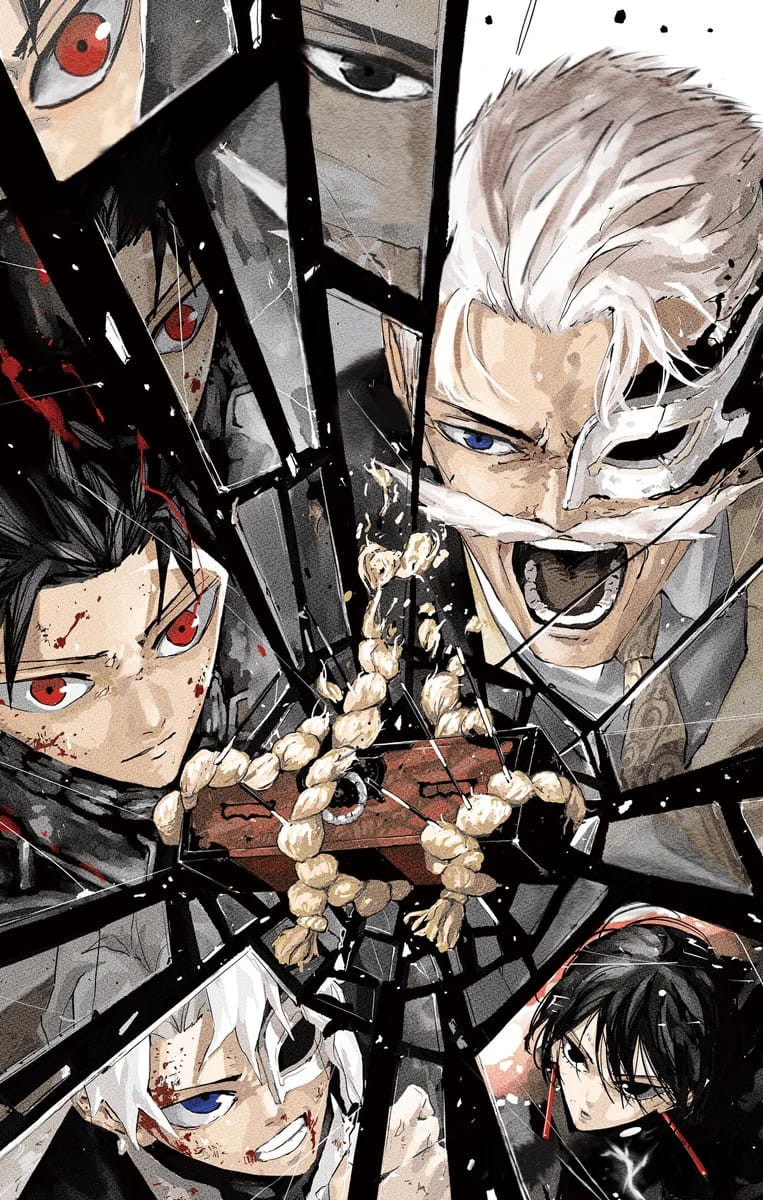
Credit Viz Media
Story and Art by Takeru Hokazono. 63 chapters across 5 volumes. 2024 saw the release of 47 chapters and 5 volumes, covering the end of the “Vs. Sojo” Arc, the entire “Rakuzaichi” Arc, and the start of the “Sword Bearer Assassination” Arc. 5⭐

Credit Viz Media
Kagurabachi follows the story of Rokuhira Chihiro as he seeks to avenge his father’s murder. Chihiro’s dad Kunishige ended a war by crafting eight magic katanas that were weapons of mass destruction. After the war, Chihiro and Kunishige lived under government protection until the criminal sorcerer group the Hishaku uncovered where they lived, killing Kunishige and leaving Chihiro for dead. Armed with a ninth magic sword his dad made while they were in hiding, Chihiro wants to hunt down the Hishaku. However, his dad’s legacy is more complicated than it first appears, and people are fighting for control of the magic blades and to control the narrative about the war. As Chihiro goes from one fight to the next, he gets deeper and deeper over his head, drawing ire from both the government and the criminal underworld, all the while struggling with the knowledge that this isn’t the path his dad wanted for him.
I wanted to dislike Kagurabachi. The series became a meme almost immediately upon release with Shonen Jump attempting to set the series up as a successor for the multiple big names that are winding down. Paired with a somewhat goofy start to the series, many people thought that it was going to be a swing and a miss. But the author ended up proving the masses wrong. Kagurabachi has one of the most relentless paces of any series that I’ve ever read, cutting out any possible downtime. It has the feeling of an action movie where the exhausted hero wipes out a floor of enemies only to hear reinforcements arrive. Chihiro never gets a break, being thrust from one fight to the next, with the only moments of peace being the moments where he is unconscious, either due to exhaustion or injury. While the art of the characters is admittedly wonky, it manages to work, and the art more than makes up for its weaknesses in the strength of the action scenes and the creativity of the magic in the world. What ended up being most fascinating about Kagurabachi is the way that it is trying to tackle legacy. Chihiro loves his father, but is forced to grapple with the fact that his dad is essentially responsible for the death of millions. Every adult around Chihiro is traumatized from war, they know the toll of death, and they know that Kunishige wouldn’t have wanted that for Chihiro. Chihiro is forced to reconcile whether he is honoring his dad’s memory by seeking vengeance, or if he’s merely doping his pain with this mission. The series is still too early on to have satisfying answers for these questions, but I’ve been fascinated by the asking, especially as secondary character Sazanami Hakuri is introduced. He faces similar struggles of legacy to Chihiro, but from a radically different lens trying to win the love of his criminal overlord father. Overall, it’s been a fascinating series to see grow. We’ll see if it can maintain.
Kagurabachi is pretty new, so it’s not difficult to catch up. It takes the first ten chapters for things to get going, but since then it’s been nonstop since. The first few volumes are just starting to release in English, and chapters can be read on the Shonen Jump App.
Number 3: Look Back

Credit Viz Media
Story and Art by Tatsuki Fujimoto. 1 volume, 2021. Status: Complete. 5 ⭐
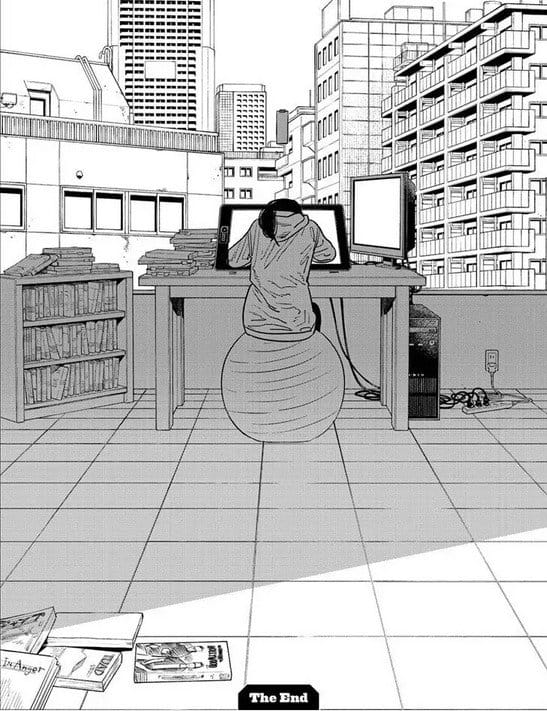
Credit Viz Media
Look Back tells the story of Ayumu Fujino, a young artist driven to greatness through a rivalry reclusive classmate, Kyomoto. After a chance encounter, the two become friends and eventually collaborators on a manga. However, Fujino and Kyomoto have different goals, leading them to drift apart over the years. Over time, Fujino is forced to consider the purpose of art in her life, and she reflects on what Kyomoto has meant to her.
I was torn between choosing Look Back and Fujimoto’s other one-shot, Goodbye Eri, for this list. Eventually I chose Look Back because I found that the emotions and themes more resonant, but both were 5 star reads this year. Fujino starts as an obnoxious brat, coasting on her natural talent and wit to get by. Only when Kyomoto starts intruding into her world is Fujino forced to actually work at her gifts. What follows is an intense look at what it takes to acquire artistic skill, and the things that get set aside in the pursuit of talent in a single field. Fujino and Kyomoto are drawn to each other because of their shared love for art, and seeing the joy that the two girls bring each other is a true delight, which amplifies the pain of later seeing them drift apart. Spread throughout is an air of magical realism that Fujimoto loves to bring to all his works. The narrative can be a little bizarre, but in a way that I found to suit the themes. It ends on an extremely emotional note, and I managed to blow through the book in about an hour. For such a short read, it managed to fit a lot into it.
Look Back is a short stand alone work with no real commitment to reading it if you can get your hands on the book. It’s not even 150 pages long. It can be found at most bookstores that carry manga. If reading still feels like a bit too much, a movie adaptation came out this past summer and can be found on Amazon video.
Number 2: One Piece
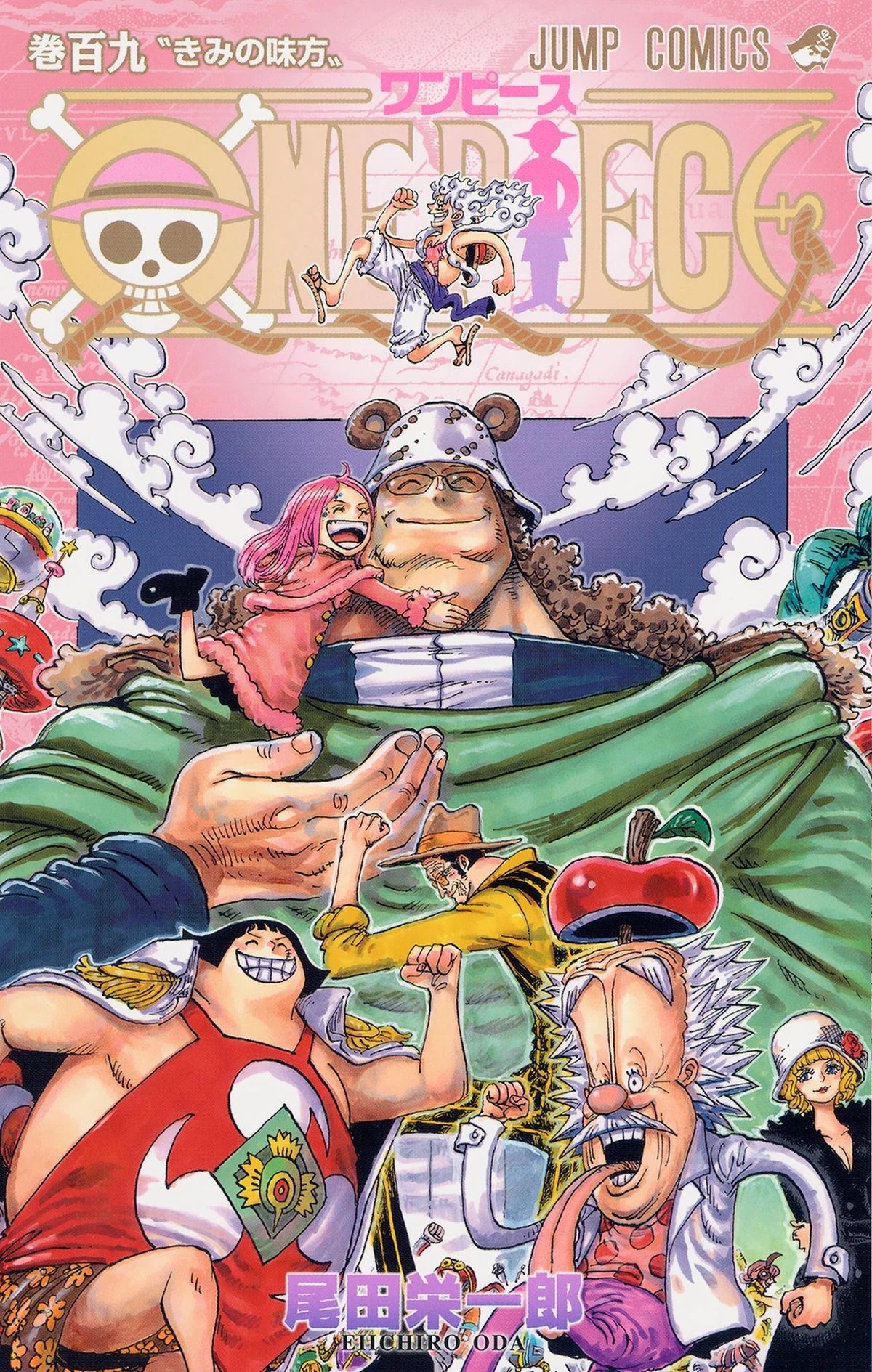
Credit Viz Media
Story and art by Eiichiro Oda. 1135 chapters across 110 volumes. 2024 saw the release of 3 volumes and 32 chapters, covering the end of the “Egghead” Arc and start of the “Elbaph” Arc. 5⭐

Credit Viz Media
One Piece follows the journey of Monkey D. Luffy to become king of the pirates by finding the mythical treasure, the One Piece. Along the way, he gathers his crew, coming into conflict with other pirates, the marines, and the World Government. As the series approaches its close, an increasing number of questions and answers are being asked and revealed about the tyranny of the world government, the peoples they conquered and subjugated, and just what exactly the One Piece has to do with all of this.
One Piece is a series I acknowledge I have a soft spot for. I discovered the anime when it premiered on the FoxBox Saturday morning cartoon block in 2004, and it was the first manga I ever read when I got into the medium in high school. I instantly fell in love. I’ve been reading the series weekly for half my life at this point. It is my favorite manga, it is the best selling manga in the world, and overall one of the most successful media franchises of all time. Despite this, for nearly 8 years, I’ve been concerned that the series was stagnating. The second half of the series seemed focused on rehashing the same story beats of the first half, but with more bloat and less punch. I felt concerned that One Piece may just fizzle out its ending, being perfectly serviceable but nowhere near the heights of what I’d fallen in love with. This past year has laid all those fears to rest with some of the best storytelling in the history of the series. For nearly 20 years, Oda has been hinting about the darkness at the top of the One Piece world, and in this past year he’s been pulling out all the stops to answer questions about the history and depravity of the world government. There remains quite a bit yet to be revealed, but we’ve been shown massive character moments from Luffy and the Strawhats, as well as the villains. Oda remains a creative genius, coming up with unique characters, designs, and abilities to fill his wacky, beautiful world. The story is not as deep as any of the other top series, but Oda makes up for that by having the best world and character building of anyone on this list. One Piece is a true epic fantasy series, and always keeps me coming back for more.
There’s no ignoring the length of One Piece, and there’s no place to jump in other than the beginning, once again on the Shonen Jump App. However, to get a taste of what’s going on, the Netflix live action adaptation did a decent job of showcasing the story. As a hardcore fan I was left somewhat disappointed, but it’s as good a place as any to get a feel for what One Piece has to offer. The anime is also going to be remade from the ground up at the beginning, and that should be coming out at the end of this year or the start of next. While I believe the manga is the best way to discover this story, if it’s too daunting, you might as well wait for the remake. It’s been 30 years, One Piece isn’t going anywhere.
Number 1: Akane-banashi

Credit Viz Media
Story by Yuki Suenaga, art by Takamasa Moue. 141 chapters across 14 volumes. 2024 saw the release of 48 chapters and 5 volumes, covering the “Futatsume Debut Event” Arc, the “Maikeru’s Shin’uchi Promotion Test” Arc, the “Shiguma Solo Event” Arc, and the “Arakawa School Past” Arc. Status: Ongoing. 5⭐
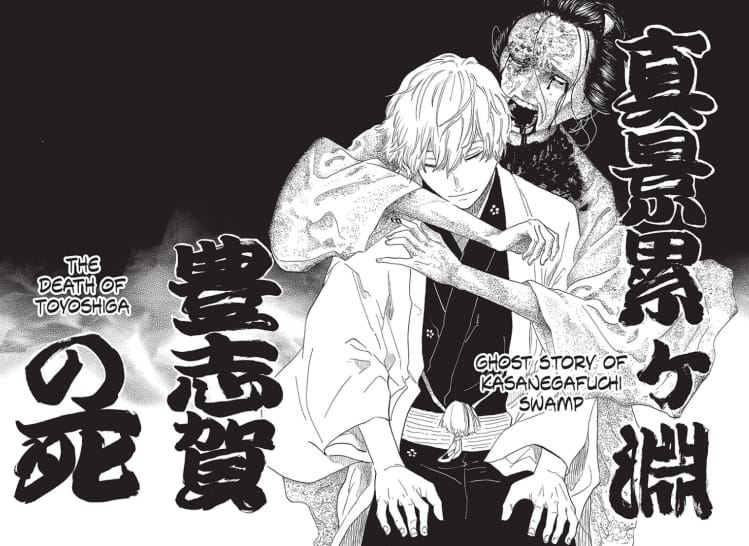
Credit Viz Media
Akane-Banashi follows Akane Arakawa as she enters the world of Japanese rakugo. Rakugo is a Japanese art form focused on oral storytelling. Akane’s dad was a rakugoka who was set to become a pro, only to be dramatically expelled to raise the fame and infamy of Issho Arakawa, leader of the Arakawa school. Akane wants to follow in her father’s footsteps and copy his style to show the world that he was a true talent. The past year saw Akane graduate from the novice “zenza” level to become a journeyman “futatsume,” while her fellow apprentice Maikeru competes to graduate from the “futatsume” rank to “shin’uchi” professional rank, the first attempt to do so since the expulsion of Akane’s father Shinta six years earlier. After, Akane’s teacher Shiguma Arakawa performs his own event, showcasing what it means to be at the top of the rakugo world, and revealing the past that led Shiguma and Issho to lead the Arakawa school.
One Piece might be my favorite manga of all time, but Akane-banashi was by far the best manga of this year. With an absolute breakneck pace that saw almost a release a week over the past year, Akane-banashi covered a truly staggering amount of narrative. Akane is finally starting to recognize that she can honor her dad’s legacy without merely living in his shadow, and seeing Maikeru work to become a Shin’uchi helped to heal some of the trauma she suffered from her dad’s expulsion. But saying all of this does a disservice to where Akane-banashi truly shines, and that is in the reverent approach it takes to rakugo, and art broadly. Rakugo is obviously something that we lack context for in the West, but Akane-banashi not only manages to explain it, but to showcase why it is such a captivating style. The art shows how great rakugoka let themselves be absorbed into the roles they portray, and how they bring the audience into new and exciting worlds. I’ve always been someone who gets sucked into stories, and Akane-banashi does the best job of showcasing that feeling in its purest essence in each page. The series also shows just how intense the practice can be to reach that level of skill. Akane and her fellow students are always seeking ways to improve their art and to bring stories to life. All of this is tied together with a bubbly yet popping art style that heightens every scene. Many of the series I’ve read involve battles of life and death, yet Akane-banashi often manages to bring that same or greater tension into its artistic showcases. It is a truly vibrant series that makes me appreciative of art in all its forms, and seeing the growth and emotion within never ceases to amaze me.
Akane-Banashi chapters can be read via the Shonen Jump App. What can I say, SJ was at top form this past year. There’s really no jumping in point other than chapter 1, with not even an anime to turn to. But please, if there’s any work that you choose to read from this list, let this be the one. My words can’t begin to do it justice.
And there you have it, the best manga of 2024. This ended up going quite a bit longer than I intended, so I’ll keep the postscript short. Manga has helped open me up to global storytelling and encouraged me to reconsider how I view any individual medium. It has made me a more engaged reader, improved my media literacy, and challenged me to expand my horizons. I don’t expect manga to do that for everyone, but I would challenge you to find art that does. I’ll see you all next time.
Soma